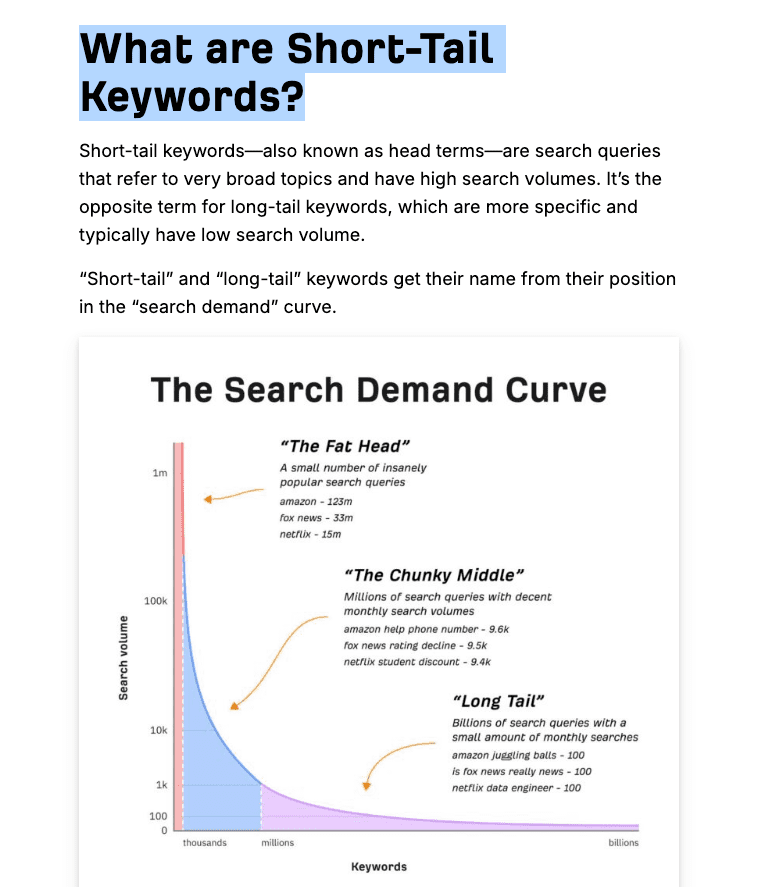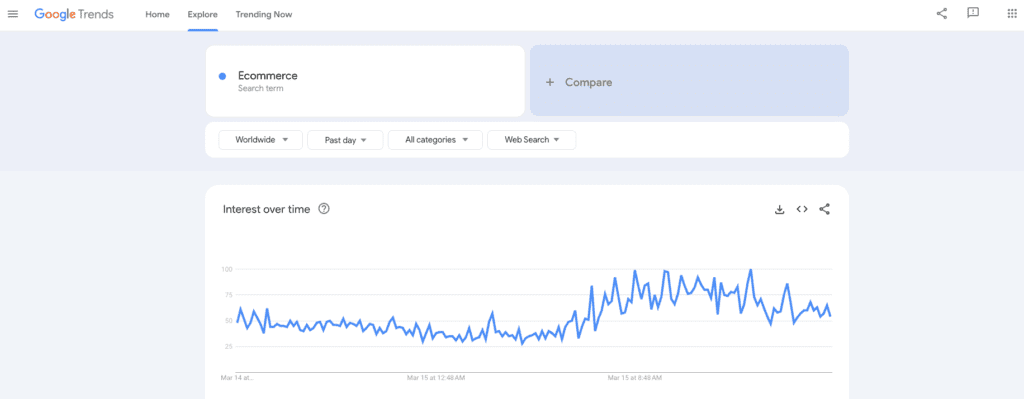Want to know how to find ecommerce trending keywords that actually drive traffic and sales? Struggling to stay ahead of your competitors? You’re not alone.
Knowing what people are searching for is the key to getting more visibility, clicks, and conversions.
The right keywords can put your products in front of buyers at the exact moment they’re looking to purchase.
Trending keywords tap into what’s popular right now, helping you capture demand before it peaks.
If you’re launching a new store or optimizing an existing one then knowing how to find ecommerce trending keywords can be the difference between a best-seller and a product that gets lost online.
But trends change fast, and using outdated keywords can hurt your rankings. That’s why in this guide, I’ll show you:
✔ How to find ecommerce trending keywords using free and paid tools
✔ How to analyze competitors to uncover profitable search terms
✔ Where to track emerging trends across search engines, marketplaces, and social media
By the end, you’ll have a clear, repeatable strategy to spot trends early and use them to boost traffic, improve rankings, and increase sales. Let’s get started!
Contact Smart Clipping for Professional Photo Editing
What Are Ecommerce Trending Keywords?
Before jumping into how to find ecommerce trending keywords, let’s define what they are. Simply put, ecommerce trending keywords are search terms that are gaining popularity within online shopping. These keywords can come from seasonal demand, viral trends, or shifts in consumer behavior.

Short-Tail vs. Long-Tail Keywords
When researching keywords, you’ll come across short-tail and long-tail keywords:
✅ Short-Tail Keywords – These are broad and highly competitive (e.g., “running shoes”). They have high search volume but can be hard to rank for.
✅ Long-Tail Keywords – These are more specific and easier to target (e.g., “best running shoes for flat feet”). They have lower search volume but tend to attract high-intent buyers.
For ecommerce, long-tail keywords are often the best choice because they bring more targeted traffic and higher conversions.
Evergreen vs. Trending Keywords
Another key difference is between evergreen and trending keywords:
✔ Evergreen Keywords – These keywords stay relevant all year round. Examples include “laptop backpack” or “wireless headphones.” They provide consistent traffic but may face higher competition.
✔ Trending Keywords – These keywords gain popularity based on seasonal demand, viral trends, or new product launches. Examples include “Halloween costumes for kids” in October or “Taylor Swift concert outfits” during a tour.
Using a mix of evergreen and trending keywords is the best approach. Evergreen keywords keep your store visible long-term, while trending keywords help you capitalize on temporary demand spikes.
Need Help With Ecommerce Product Photo Editing Contact Smart Clipping
Recent Ecommerce Keyword Trends
To give you a better idea, here are some real-world trending keywords from different niches:
- Fashion – “Barbiecore outfits” (spiked after the Barbie movie release)
- Tech – “AI writing tools” (grew with the rise of ChatGPT)
- Home & Decor – “Minimalist home decor” (increasing due to lifestyle trends)
- Health & Fitness – “75 Hard challenge” (viral fitness trend)
By tracking these trends, you can stay ahead of the competition and optimize your product listings accordingly.
Now that you understand what ecommerce trending keywords are and why they matter, it’s time to learn how to find and use them effectively.
In the next section, I’ll walk you through step-by-step methods, including free tools, competitor analysis, and social media insights. Stay tuned!
Best Cameras for Ecommerce Product Photos
How to Find Ecommerce Trending Keywords – Step by Step
Why Finding Ecommerce Trending Keywords Matters
If you want more traffic, higher sales, and better rankings, you need to know how to find ecommerce trending keywords before your competitors do. The right keywords help you reach active buyers at the perfect time. But how exactly do they impact your ecommerce business? Let’s break it down.
1. Trending Keywords Boost SEO and Organic Traffic
Search engines like Google prioritize fresh, relevant content. When you optimize your store with trending keywords, you increase your chances of ranking on the first page of search results. More visibility means more organic traffic. This means more potential sales.
For example, if “minimalist desk lamp” starts trending, stores that quickly optimize their product pages with this keyword will see an increase in search rankings and clicks before the trend fades.
2. Lower PPC Costs and Better Paid Ad Targeting
Using trending ecommerce keywords in Google Ads, Facebook Ads, and TikTok Ads helps lower your cost-per-click (CPC) and improve targeting. Since trending keywords have lower competition at the start, your ads will reach the right audience for less money.
Imagine you sell eco-friendly water bottles. If “BPA-free collapsible water bottle” starts trending, bidding on this keyword early could result in lower ad costs and higher conversion rates.
Best Ecommerce Photo Editing Software for Perfect Product Images
3. More Product Visibility on Amazon, Etsy, and eBay
Marketplaces like Amazon, Etsy, and eBay work like search engines. Shoppers type in keywords to find what they need. If your product listings use trending search terms, they appear higher in search results, making them more likely to get clicked and purchased.
A good example is how fidget spinners took off. Brands that quickly optimized their Amazon listings with trending keywords saw a massive spike in sales before the trend faded.
4. Case Study: A Brand That Used Trending Keywords to Grow
A small pet accessories brand, Pawsorries saw a 400% increase in sales after identifying and targeting the trending keyword “no-pull dog harness.” By optimizing their product titles, descriptions, and ad campaigns with this keyword, they outperformed competitors and ranked at the top of search results.
The takeaway? Spotting and using trending ecommerce keywords early can make a massive difference in visibility and revenue.
What Type of Photos are Best for Wix Ecommerce? A Data-Backed Guide
Best Free & Paid Tools to Find Ecommerce Keywords
You don’t have to guess what’s trending. There are powerful tools that help you find trending ecommerce keywords fast. Let’s go over the best free and paid options.

Free Tools to Find Ecommerce Trending Keywords
✅ Google Trends – Google Trends tracks search trends over time. Helps you see if a keyword is gaining popularity.
✅ Google Keyword Planner – Google Keyword Planner shows search volume and competition levels.
✅ Ubersuggest – Ubersuggest provides keyword suggestions, competition analysis, and search trends.
Paid Tools
💰 SEMrush – SEMrush excellent for competitor keyword research and trend tracking.
💰 Ahrefs – Ahrefs provides in-depth keyword analysis, including search trends and competition scores.
💰 Jungle Scout – Jungle Scout is best for finding trending keywords on Amazon.
💰 Helium 10 – Helium 10 helps ecommerce sellers track keyword trends and optimize listings on marketplaces.
How These Tools Help You Find Ecommerce Trending Keywords
Using these tools, you can:
✔ Identify keywords with rising search volume
✔ Analyze competitor keywords to find what’s working
✔ Discover low-competition, high-converting search terms
By combining free and paid tools, you can spot keyword trends early and stay ahead of the competition.
How to Edit Product Photos for Ecommerce – Complete Guide
How to Validate and Prioritize Ecommerce Keywords
Not all trending keywords will bring sales. You need to filter out low-quality search terms and focus on the ones that actually lead to conversions.
1. Check Search Volume & Competition
A keyword might be trending, but if nobody is searching for it, it won’t bring traffic. Use tools like Google Keyword Planner or Ahrefs to check:
🔹 Monthly search volume – Are enough people searching for it?
🔹 Keyword difficulty – Is the competition too high?
2. Analyze Buyer Intent
Not all keywords lead to purchases. Some are informational, while others are transactional.
- Transactional keywords (e.g., “buy leather backpack”) indicate a shopper ready to purchase.
- Informational keywords (e.g., “best backpacks for travel”) show research intent.
For ecommerce, focus on transactional and commercial intent keywords to drive sales.
How to Add White Background on Ecommerce Photos Quick
3. Filter for Low-Competition, High-Conversion Keywords
Look for keywords with moderate search volume but low competition. These are easier to rank for and can drive steady, targeted traffic.
4. Test Keywords with Paid Campaigns
Before going all in, test new keywords in a small Google Ads or Facebook Ads campaign. If they drive conversions, you can scale up.
By following these steps, you’ll ensure you’re choosing the right ecommerce trending keywords that actually bring results.
How to create advertising photos for my ecommerce clothing store
Implementing Keywords in Your Ecommerce Store
Once you’ve found your trending keywords, you need to optimize your store to maximize traffic and sales.

1. Optimize Product Titles & Descriptions
Your product title is the first thing shoppers see. Use high-ranking keywords naturally:
Example: Instead of “Men’s Sneakers,” use “Lightweight Running Sneakers for Men – Breathable & Comfortable.”
2. Use Keywords in Meta Tags & URLs
- Meta title: Make sure your keyword appears in the title tag.
- Meta description: Include a compelling call to action with your keyword.
- URL structure: Keep URLs short and keyword-focused.
3. Create SEO-Friendly Product Category Pages
If you sell multiple related products, optimize category pages with trending keywords. Example:
- Instead of /products, use /best-winter-boots to improve rankings.
4. Write Blog Content for Long-Tail Keywords
Long-tail keywords bring consistent traffic. A blog post like “Best Running Shoes for Flat Feet – 2024 Guide” can bring in buyers looking for specific solutions.
These strategies help your store rank higher and attract more shoppers using trending keywords.
How to Take Ecommerce Photos According to Experts
Common Mistakes to Avoid When Finding Keywords
Finding keywords is one thing, but using them correctly is another. Here are the most common mistakes I see:
❌ Using keywords that are too broad or competitive – “Running shoes” is too broad. “Waterproof trail running shoes for winter” is more specific and easier to rank for.
❌ Ignoring search intent – If you target research-based keywords instead of buying-focused ones, you’ll get traffic but no sales.
❌ Forgetting about mobile & voice search – People search differently on mobile. Optimize for conversational keywords like “best budget gaming laptop under $500.”
❌ Keyword stuffing – Repeating keywords unnaturally in your product descriptions hurts rankings and conversions. Write for real people, not just search engines.
How to Tag Photos on Ecommerce Website for Maximum Visibility
Conclusion & Action Plan
Finding ecommerce trending keywords isn’t just about rankings—it’s about getting real customers to your store. Let’s recap:
✔ Trending keywords improve SEO, PPC, and marketplace rankings.
✔ Use free and paid tools to spot rising trends before competitors.
✔ Validate keywords based on search volume, competition, and intent.
✔ Optimize your store with the right keywords in titles, descriptions, and blogs.
3-Step Action Plan to Get Started Today:
1️⃣ Use Google Trends & Keyword Planner to find 3 trending keywords in your niche.
2️⃣ Check their search volume & competition in Ahrefs or Ubersuggest.
3️⃣ Optimize one product title & description with your best keyword today.
🚀 Your next move? Start researching and implementing trending ecommerce keywords right now!


